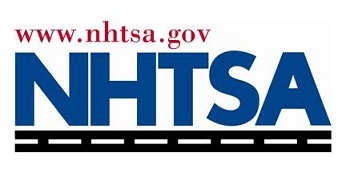NHTSA: Traffic Fatalities Up Sharply in 2015
 |
From NHTSA
White House and DOT issue call to action to data scientists and public health experts as 2,348 more people died in traffic crashes compared to previous year
WASHINGTON August 29, 2016; The nation lost 35,092 people in traffic crashes in 2015, ending a 5-decade trend of declining fatalities with a 7.2% increase in deaths from 2014. The final data released today by the U.S. Department of Transportation’s National Highway Traffic Safety Administration showed traffic deaths rising across nearly every segment of the population. The last single-year increase of this magnitude was in 1966, when fatalities rose 8.1% from the previous year.
"Despite decades of safety improvements, far too many people are killed on our nation’s roads every year," said U.S. Transportation Secretary Anthony Foxx. "Solving this problem will take teamwork, so we're issuing a call to action and asking researchers, safety experts, data scientists, and the public to analyze the fatality data and help find ways to prevent these tragedies.”
Ten years ago, the number of traffic deaths was nearly 25% higher, with 42,708 fatalities reported nationwide in 2005. Since then, safety programs have helped lower the number of deaths by increasing seat belt use and reducing impaired driving. Vehicle improvements, including air bags and electronic stability control, have also contributed to reducing traffic fatalities.
In response to the increase, DOT, NHTSA, and the White House are issuing an unprecedented call to action to involve a wide range of stakeholders in helping determine the causes of the increase. NHTSA will share its Fatality Analysis Reporting System with safety partners, state and local officials, technologists, data scientists, and policy experts. And private sector partners using new data collection technologies will be offering access to unprecedented amounts of data and new visualizations tools.
According to NHTSA, job growth and low fuel prices were two factors that led to increased driving, including increased leisure driving and driving by young people. More driving can contribute to higher fatality rates. In 2015, vehicle miles traveled (VMT) increased 3.5% over 2014, the largest increase in nearly 25 years.
Pedestrian and pedalcyclist fatalities increased to a level not seen in 20 years. Motorcyclist deaths increased over 8%. NHTSA also noted human factors continued to contribute to the majority of crashes. Almost half of passenger vehicle occupants killed were not wearing seat belts. Research shows almost one in three fatalities involved drunk drivers or speeding. One in 10 fatalities involved distraction. Click here for a 2015 Lives Saved Research Note. Click here for a 2015 Overview.
"The data tell us that people die when they drive drunk, distracted, or drowsy, or if they are speeding or unbuckled," said NHTSA Administrator, Dr. Mark Rosekind. "While there have been enormous improvements in many of these areas, we need to find new solutions to end traffic fatalities."
In addition to the call to action on understanding the increase in deaths, USDOT will hold a special session at its Safer People, Safer Streets Summit on September 16th to discuss the pedestrian and bicycle fatality increase with city leaders taking part in the Mayor's Challenge.


